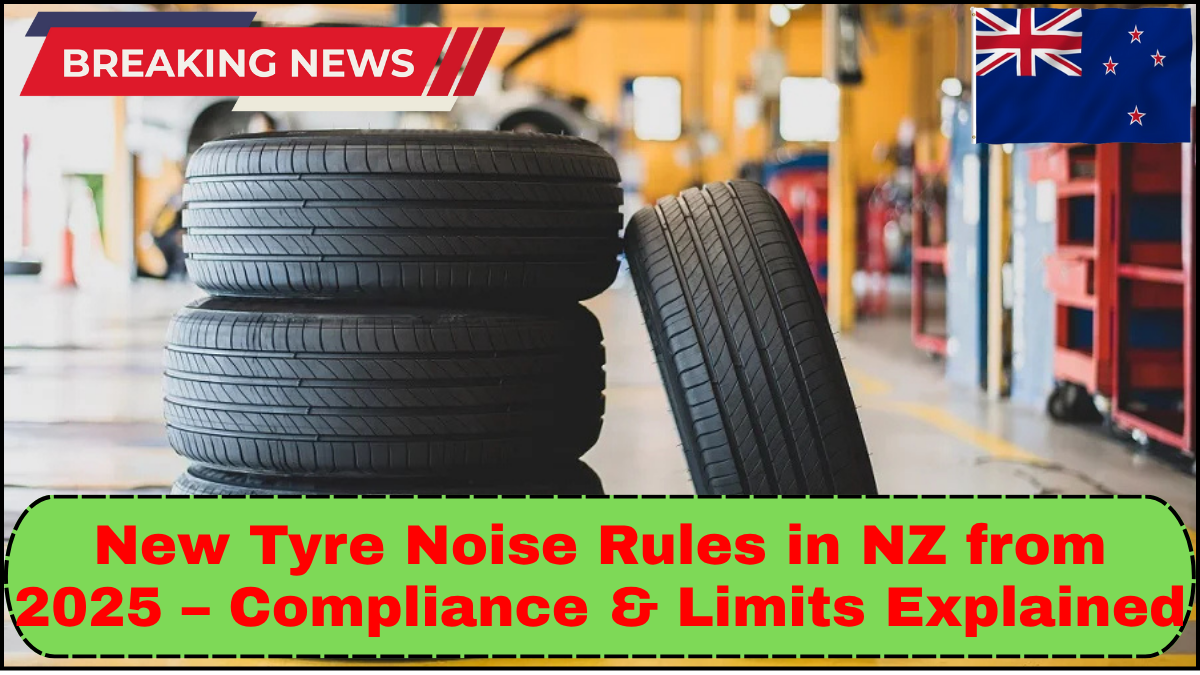From 2025, New Zealand’s transport sector will adopt stricter noise standards for vehicle tyres under the NZ Tyre Noise Regulation 2025. These new regulations mark a significant step toward improving road safety, reducing urban noise pollution, and aligning with international environmental standards.
Whether you’re a vehicle importer, fleet operator, mechanic, or everyday driver, understanding the updated tyre rules NZ is essential for staying compliant and avoiding penalties.

H3: Why New Tyre Noise Regulations Are Being Introduced
The push for quieter roads isn’t just about comfort. Excessive road noise has been linked to increased stress, sleep disturbances, and even cardiovascular problems in densely populated areas. Tyres contribute significantly to this problem, especially at higher speeds.
The NZ Tyre Noise Regulation 2025 is designed to:
-
Minimize tyre-related noise pollution
-
Enhance vehicle safety by encouraging use of tyres that balance grip and quietness
-
Harmonize with international standards such as those set by the European Union (UN ECE R117)
New Zealand is taking a proactive approach, requiring vehicle tyres to meet more stringent road noise limits, particularly for new and imported vehicles.
H3: What the NZ Tyre Noise Regulation 2025 Entails
Starting January 1, 2025, all new vehicles and imported used vehicles entering the country must have tyres that comply with the revised road noise limits. Here’s a breakdown of the key elements:
1. Decibel Thresholds
Each tyre will be tested for its noise output, measured in decibels (dB). The thresholds will vary by tyre type and size but generally fall within these ranges:
-
Passenger car tyres: ≤ 72 dB
-
Light commercial vehicle tyres: ≤ 74 dB
-
Heavy truck/bus tyres: ≤ 76 dB
Tyres that exceed these limits will not be allowed for import or sale in New Zealand.
2. Mandatory Labelling
To ensure transparency, tyres must feature standardized labelling that includes:
-
Noise level rating in decibels
-
Grip performance
-
Fuel efficiency
This empowers consumers to make informed decisions while supporting the regulation’s broader goal of promoting safer and quieter tyres.
3. Applicable Vehicles
The regulation applies to:
-
New and imported used cars
-
Light trucks and commercial vehicles
-
Heavy-duty vehicles (buses, trucks)
-
Motorcycles (subject to separate classification)
Vehicles already in use before 2025 are exempt but are encouraged to switch to compliant tyres during replacement cycles.
H3: Implications for Vehicle Owners and Businesses
Vehicle Importers:
All tyres on imported vehicles must meet NZ Tyre Noise Regulation 2025 standards. Failing to comply could result in rejection at the border or fines.
Retailers and Mechanics:
Tyre stock must be updated to ensure only compliant products are sold post-2025. Retailers should educate customers on the benefits of low-noise tyres, particularly around vehicle safety and comfort.
Fleet Operators:
Businesses managing vehicle fleets should plan early upgrades to avoid disruptions and to improve environmental impact scores.
H3: How to Check Tyre Compliance
To verify tyre compliance:
-
Check labelling: Look for the decibel rating and compare it to the regulation limits.
-
Request certification: Suppliers should provide documentation proving that the tyres meet NZ standards.
-
Use official tools: Waka Kotahi (NZ Transport Agency) is expected to release a compliance database to help identify approved tyre models.
H3: Exceptions and Transitional Provisions
While the regulation is firm, the government has outlined transitional measures to prevent market disruption:
-
Grace periods for importers with existing tyre inventory (typically 6–12 months).
-
Exemptions for classic or vintage vehicles under special registration.
-
Case-by-case allowances for remote areas where compliant tyres may not yet be available.
H3: The Road Ahead – Long-Term Benefits
Long term, the NZ Tyre Noise Regulation 2025 will:
-
Lower community exposure to road noise
-
Encourage innovation in tyre technology
-
Improve vehicle safety by promoting better grip-to-noise ratios
-
Reduce environmental footprint through more energy-efficient tyres
This isn’t just a regulatory update—it’s a shift toward a cleaner, safer, and more sustainable driving future in New Zealand.
Frequently Asked Questions (FAQ)
Q1: Will I need to replace my current tyres in 2025?
No, existing tyres on vehicles already in use before 2025 are exempt. However, when replacing tyres, it’s encouraged to choose compliant models.
Q2: How can I tell if a tyre meets the new noise limit?
Look for the official tyre label indicating the decibel rating. Anything above the permitted dB level for your vehicle type won’t be compliant.
Q3: Do these rules apply to motorcycles?
Yes, but motorcycles fall under a separate noise classification. Details will be provided by NZTA in a specific guideline.
Q4: Will this regulation affect tyre prices?
Initially, there may be a slight increase in cost due to higher-quality materials and testing. However, prices are expected to normalize as supply stabilizes.
Q5: Are retreaded tyres allowed under the new rules?
Only if the retreaded tyres meet the same noise and performance standards as new ones. Certification is required.
click here to learn more